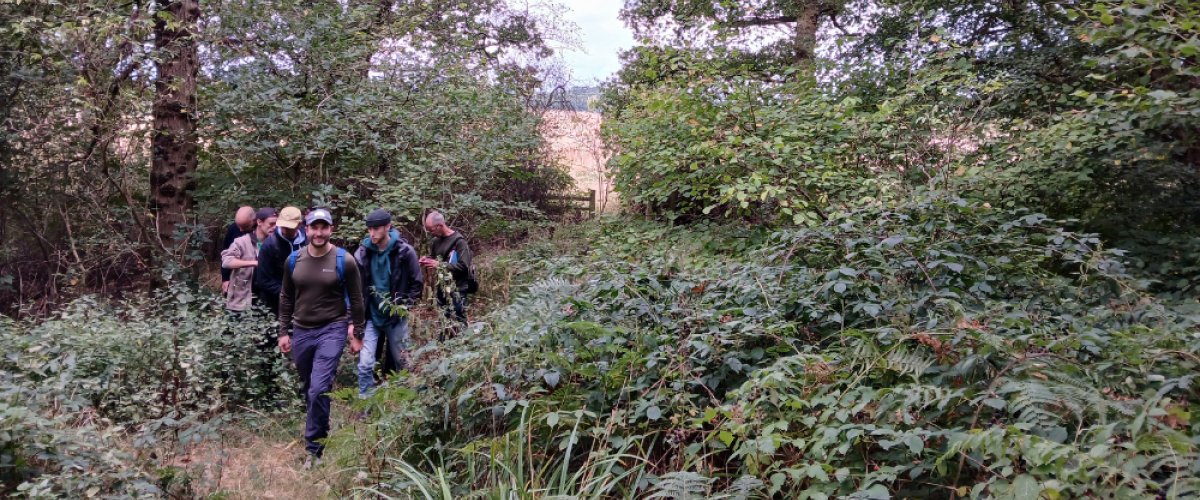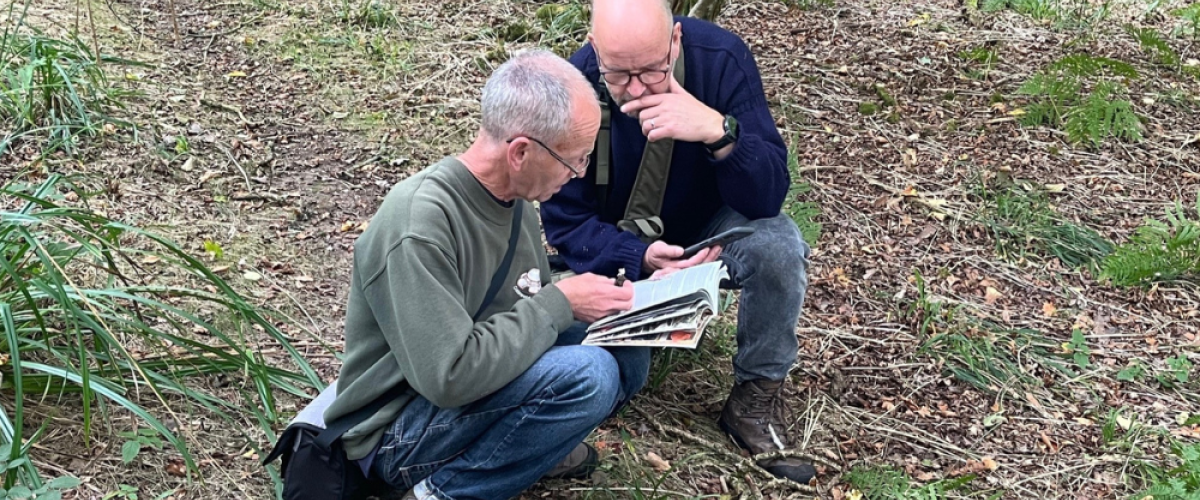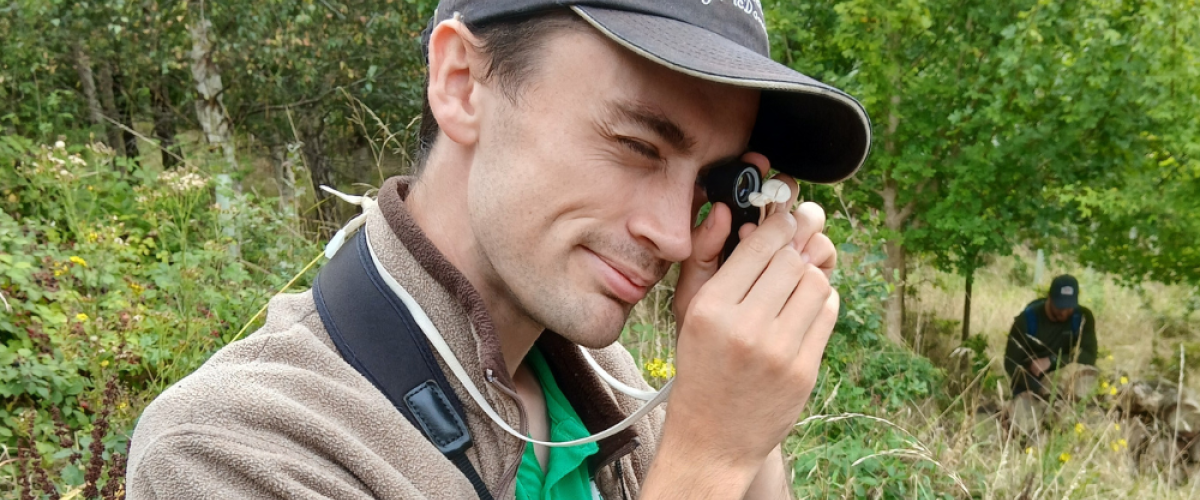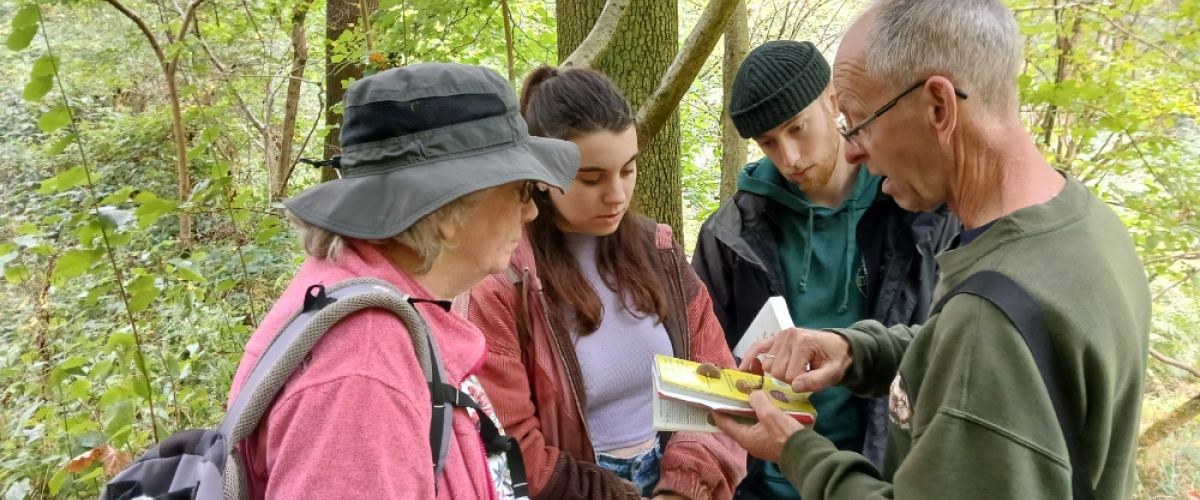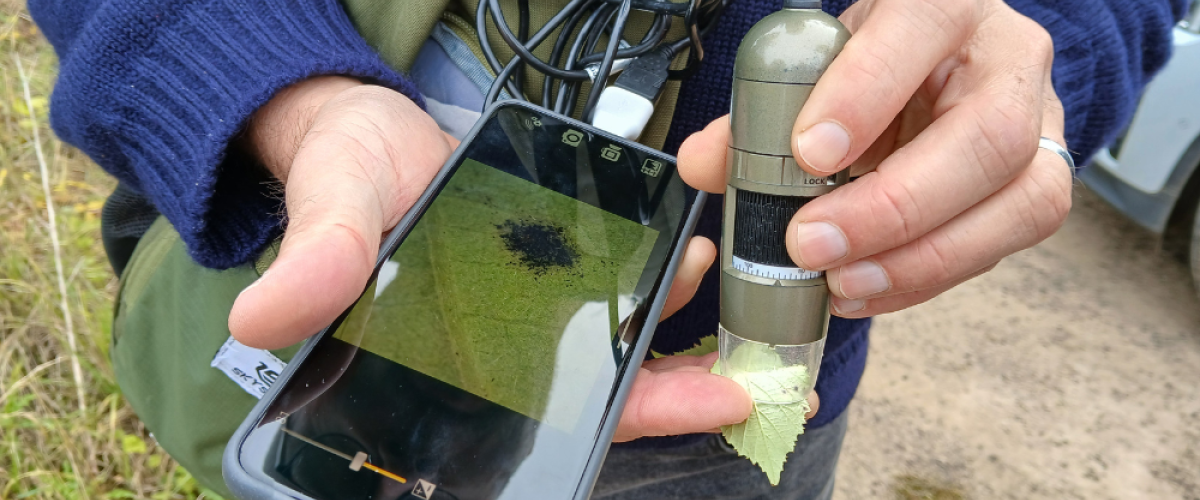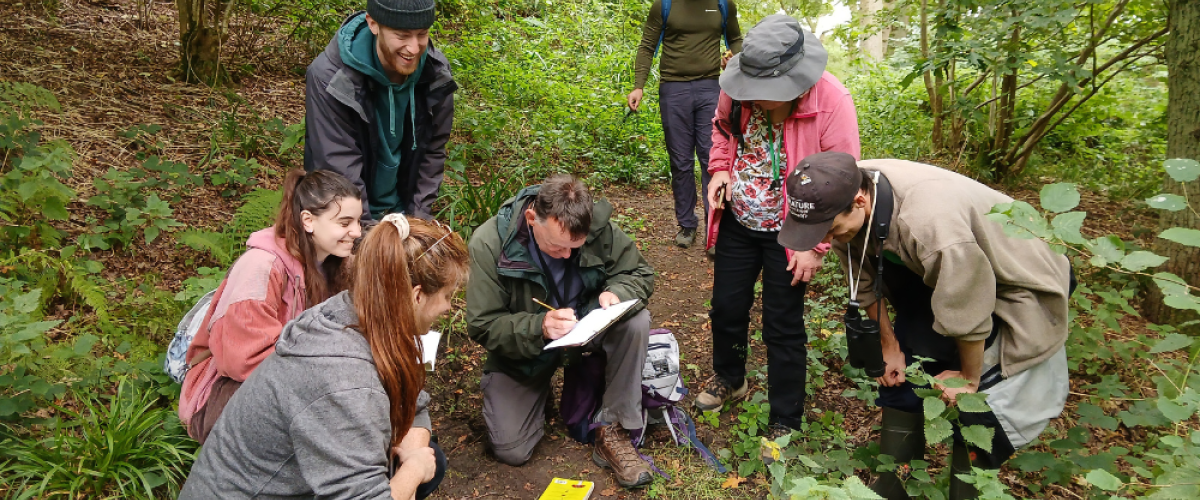
Behind the scenes: Forest foray with the Warwickshire Fungus Group
Fungi are a fascinating and diverse feature of the woodlands in the Heart of England Forest. Many species can be spotted all year round. In September the Warwickshire Fungus Group visited Alne Wood and discovered 40 species in just one visit!
The history of fungi
Long before trees overtook land, the earth was covered by fungi. Researchers have estimated that fungi existed 600 million years before the first recordings of land plants.
In 2020, fossils in a Belgian museum were identified as fungal structures dating between 715 and 810 million years ago, making them some of the earliest specimens ever recorded.
What are fungi?
More than 100,000 species of fungi have been identified by biologists, and it is estimated that more than 1.5 million species currently exist on Earth.
Fungi can be single-celled organisms, known as yeasts, or very complex multicellular organisms. Most fungi are multicellular, and these complex organisms are made up of filaments of hyphae, the network of which together to creates what is called the mycelium. The mycelium exists in the substrate the fungi is growing in, whether this be the ground, dead wood or something else.
The part of the fungus that we see above ground, with their weird and wonderful shapes and colours, is only the fruiting body – the reproductive organ of the fungus.
Further to this, fungal spores are everywhere - in the air that we breathe, the surfaces we touch, and in the soil too.
The importance of fungi in the Forest
Fungi have a symbiotic relationship with trees, meaning that both benefit from each other. Over 90% of all plant species have mycorrhizal relationships with a fungal species, and here in the Forest this relationship is vital for good growth and survival of our trees and plants.
Fungi aid the uptake of nutrients by trees and protect the roots from parasites that can be found in the soil, and in return, the fungi get the sugars they need from the trees.
Many fungi are saprophytic meaning they live in dead or dying wood, leaf litter, or faeces. Saprophytes play a very important role in the ecosystem, breaking down dead organic matter, starting the decay process and making it easier for other plants and creatures to access the nutrients locked up in dead plants. They are a great example of why leaving deadwood in forested areas is so important for biodiversity.
Foray findings
The semi-ancient woodland of Alne Wood consists mainly of oak and ash trees with a hazel understorey and had much to offer in fungi. A healthy selection of agarics and brackets were seen. Some of these included:
- glistening inkcap
- beefsteak fungus
- lion shield
- cushion bracket
- whitelaced shank
- hares-foot inkcap
- wood woollyfoot.
You can download the full list at the bottom of this article.
Highlights
Some of the highlights of the day included an interesting find of the boletus eater (Hypomyces chrysospermus). This is a parasitic fungus that grows on boletes. In this instance two fungi were found in one!
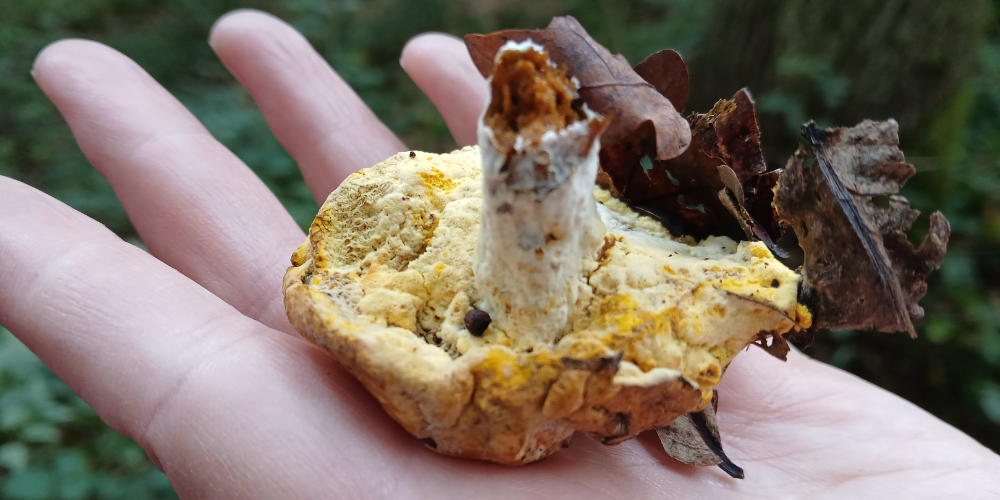
Another interesting find was a stinkhorn (Phallus impudicus) in its ‘infant’ form, described as a witch’s egg, because of its resemblance to a large egg. This fungus is often found protruding from leaf litter in its mature stage. On the day the team cut the witch’s egg in half to see the growth and revealed what would become the head of the stinkhorn.
When mature, the stinkhorn is coated in a grotesque-smelling and sticky green slime containing the spores, which is quickly removed by visiting flies, including the spores!
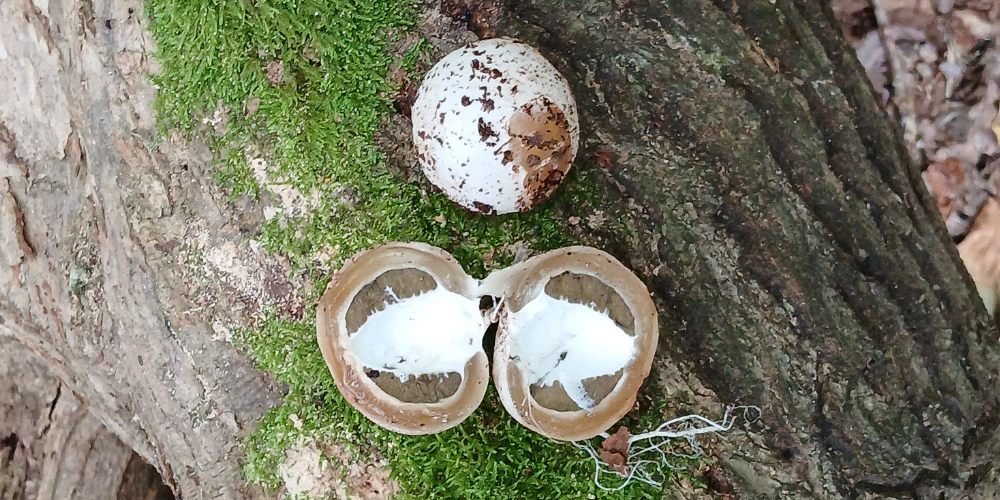
And lastly with a woodland full of oak trees, it is unsurprising that the Warwickshire Fungus Group found the nut disco (Hymenoscyphus frutigenus). A very small, whitish fungus, the fruiting bodies sit between being cup-shaped and disc-shaped. They only grow up to 4mm across and grow in clusters.
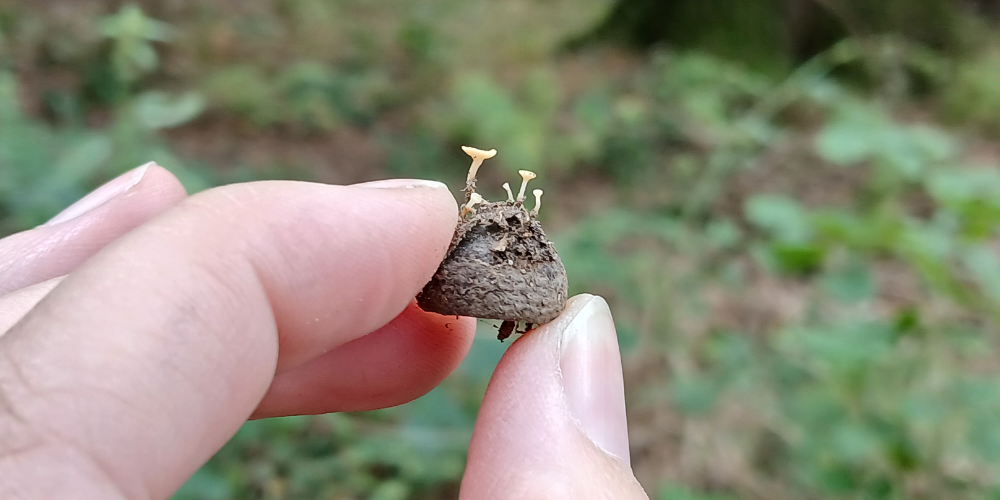
Identifying your own fungi finds
If you’d like to discover what species of common fungus you are likely to find in the Forest, take a look at our fungi spotter's guide here.
Enjoy fungi spotting in the Forest! Please remember to only take photos. We ask you do not pick or touch any of the species, leave them where they are.

